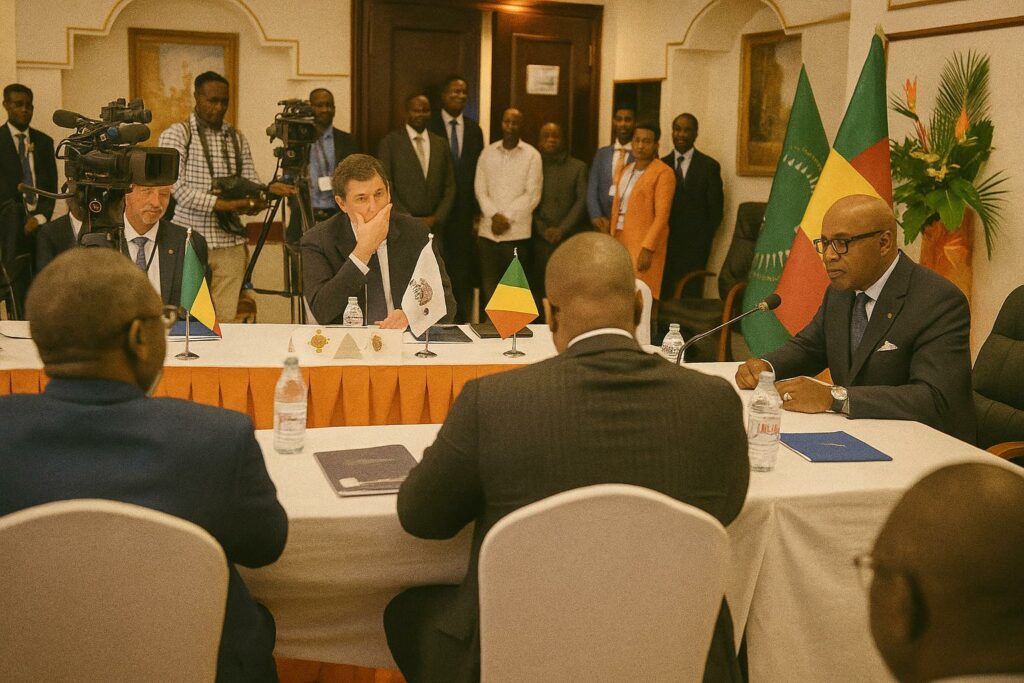Pointe-Noire forum anchors fiscal predictability
From 10 to 12 July, the Atlantic port city of Pointe-Noire became the epicentre of Congolese hydrocarbon diplomacy as Minister of Hydrocarbons Bruno Jean Richard Itoua chaired the statutory price-setting meeting. Gathered around the same table were reservoir engineers, fiscal experts and senior executives from the main operators, including TotalEnergies EP Congo, Eni Congo and Perenco. Their mandate, framed by production-sharing contracts and domestic regulations, was straightforward yet delicate: to translate three months of trading data into official sale prices that will guide both state revenue forecasts and corporate lifting programmes until October.
The mechanism, modelled on international best practice and comparable to West African peers such as Angola’s ‘reference price’ committee, is regarded by multilateral lenders as a linchpin of Congo’s budget transparency architecture. Ammat Global Ressources, the company designated to run the statistical back-office this quarter, supplied the daily cargo data that underpinned the deliberations.
Djeno and Nkossa spreads hold narrow against Brent
After two days of arithmetic that blended cargo invoices, freight adjustments and dated Brent averages, the committee validated a quarterly mean of 67.37 US dollars per barrel for the flagship Djeno blend, corresponding to a modest discount of 0.814 dollars to Brent. Nkossa Blend followed closely at 66.41 dollars with a 0.518-dollar negative differential, while the heavier Yombo grade settled at 65.43 dollars, 0.67 dollars under the benchmark.
Month-by-month calibration shows relative stability: Djeno fetched 66.07 dollars in April, 66.04 dollars in May and 69.86 dollars in June; Nkossa Blend recorded 64.23, then 65.14, and finally 69.73 dollars over the same period. Condensate-derived butane averaged 41.71 dollars, whereas propane stood at 30.18 dollars, their discounts reflecting global over-supply in liquefied petroleum gas. The composite second-quarter price across all Congolese hydrocarbon streams consequently reached 66.40 dollars a barrel, in line with figures cited by the OPEC Monthly Oil Market Report of July 2025 and only marginally below the 67-dollar level predicted by the African Energy Chamber’s 2025 Outlook.
Analysts consulted by the Congo-Brazzaville branch of the French Institute of International Relations note that such tight spreads underscore the marketability of Congolese crudes, particularly to Asian refiners seeking medium-sweet barrels capable of maximizing middle distillate yields.
Macroeconomic stakes of a half-dollar differential
For Brazzaville’s public finances, the difference between a discount of 0.5 and one of 1.5 dollars per barrel can translate into tens of millions of dollars over a fiscal year. The Ministry of Finance estimates that hydrocarbon revenue still accounts for nearly 70 percent of budget receipts. A senior official, speaking on background, explained that ‘each tenth of a dollar we defend at the pricing table safeguards social expenditure earmarked for health and education reform.’
The private sector reads the same signal through a different prism. According to a regional economist at Standard Chartered Bank, maintaining a predictable pricing formula reduces the cost of capital for brownfield life-extension projects, notably in the mature Djeno field where enhanced oil recovery is under review. Stable reference prices therefore serve as a shared hedge, anchoring both sovereign debt sustainability and operator planning cycles.
Minister Itoua champions incremental barrels
Closing the session, Minister Itoua contextualised the numbers within what he termed ‘a complex international tapestry of economic, geopolitical and energy vectors’. He reiterated President Denis Sassou Nguesso’s directive that no recoverable molecule be left untapped. While careful not to downplay environmental responsibilities, the minister insisted that higher throughput remains the most immediate lever to cushion global price swings and finance energy transition projects such as gas-to-power schemes in the coastal corridor.
Industry sources indicate that combined Congolese liquids output averages 280,000 barrels per day, roughly 20,000 shy of the technical plateau envisaged by the Ministry. The government has therefore encouraged operators to accelerate infill drilling and to revisit marginal satellite reservoirs. Eni’s offshore Campo Limande and TotalEnergies’ incremental phase on Moho Nord stand out as early beneficiaries of this renewed momentum, developments corroborated by the International Energy Agency’s June 2025 Oil Market Report.
Road to October: pricing amid energy transition headwinds
The next price-setting meeting, scheduled for 8-12 October under the stewardship of Wing-Wah E&P, will unfold against a backdrop of uncertain demand as the International Monetary Fund projects a slight deceleration in global GDP growth for 2026. At the same time, refining margins in Asia are tightening, potentially affecting the appetite for medium-sweet African grades. Market watchers observe, however, that the European Union’s incremental phase-out of Russian feedstocks continues to create structural space for Atlantic Basin crudes, an opportunity Congo is keen to harness.
Diplomats stationed in Brazzaville remark that the government’s approach seeks to balance the imperatives of fiscal resilience with the reputational benefits of alignment to global transparency norms such as the Extractive Industries Transparency Initiative, of which Congo has been a member since 2012. The Pointe-Noire meeting, while technical in appearance, thus forms part of a broader narrative: ensuring that the Republic positions itself as both a reliable supplier in a tightening market and an engaged stakeholder in the wider energy transition conversation.

